What are customer service training programs? A comprehensive overview
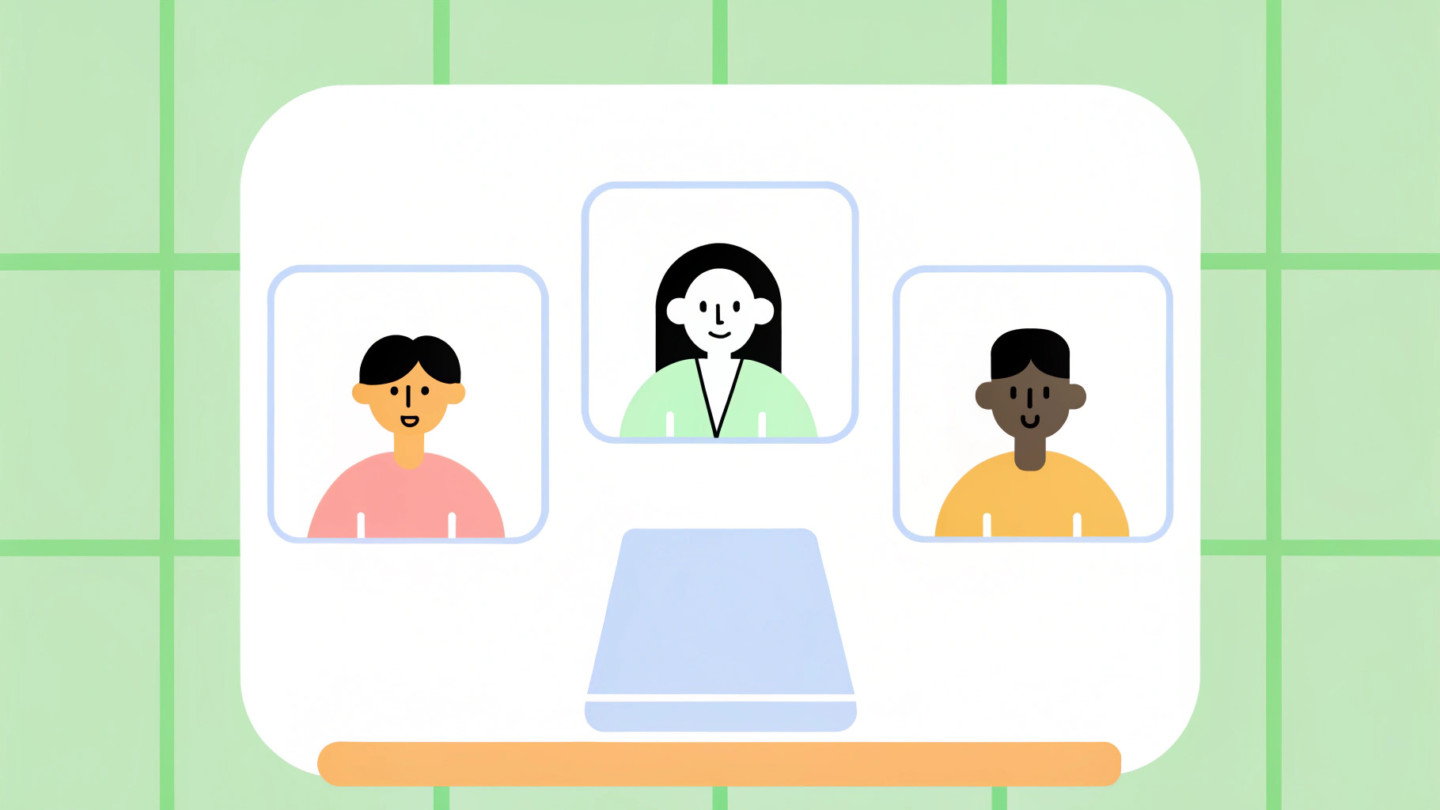
Introduction
In the competitive landscape of modern business, the significance of customer service training programs cannot be overstated. These structured initiatives are designed to equip employees with the essential skills necessary to deliver outstanding service, ultimately fostering a customer-centric culture. With a focus on vital topics such as:
- Communication
- Problem-solving
- Product knowledge
These programs aim to enhance employee capabilities and boost customer satisfaction. As organizations navigate the complexities of consumer expectations, understanding the various types of training methodologies available and their respective benefits becomes crucial. Moreover, measuring the effectiveness of these programs and addressing the challenges in their implementation are key components that can determine their success. This article explores the multifaceted nature of customer service training, providing insights into its importance, methodologies, and the tangible advantages it brings to both employees and customers alike.
Defining customer service training programs
Service training initiatives, like customer service training programs, are crucial for equipping employees with the skills they need to deliver exceptional support. Think of it as giving your team the right tools to build strong relationships with clients. These programs cover everything from communication techniques to problem-solving skills, product knowledge, and relationship management. The goal? To create a client-focused culture that empowers employees to meet client needs and boost satisfaction.
Here’s a stat that hits home: 73% of clients stick with brands because of friendly support representatives. That’s the power of effective customer service training. On the flip side, 66% of support teams tap into knowledge bases, but a staggering 82% of clients expect to see this. It’s clear that having the right resources is vital for training success. Whether through workshops, online courses, or role-playing exercises, the training methods should be tailored to fit the organization’s specific needs.
Now, let’s talk challenges. Recent findings show that 60% of support agents struggle with a lack of consumer data, which leads to negative client experiences. This is a wake-up call for organizations. If you want your agents to deliver top-notch service, they need access to comprehensive client information. As Greg Rose, Chief Experience Officer at Intellum, pointed out in a recent webinar, understanding client education is key to building effective learning initiatives.
As we gear up for 2024, the trend is clear: organizations are focusing more on development goals that enhance employee experiences. It’s about fostering inclusivity, engagement, and a growth mindset. When your employees feel supported and valued, they’re more likely to deliver the kind of service that keeps clients coming back.
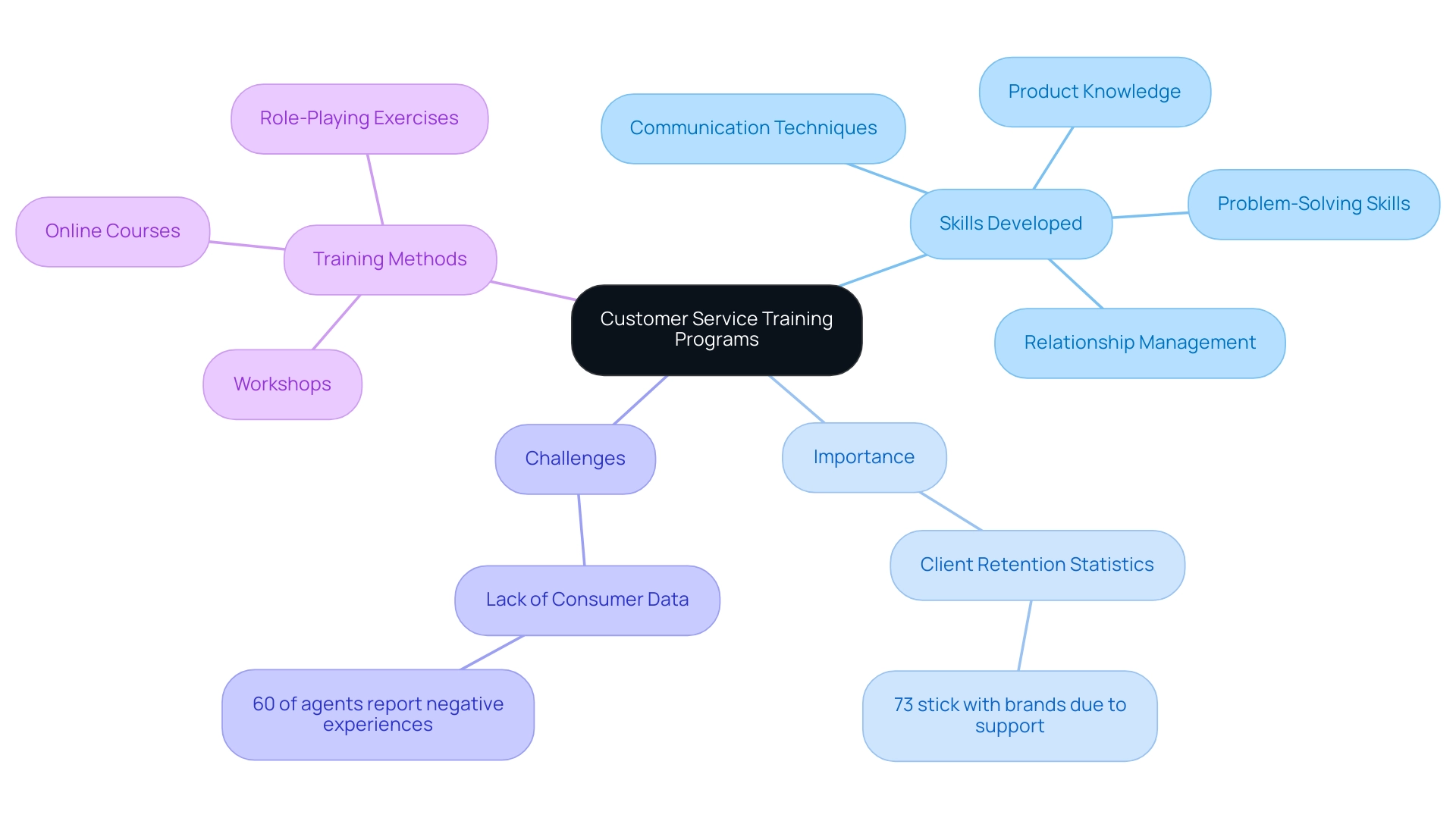
The benefits of effective customer service training
Customer service training isn’t just a nice-to-have; it’s a necessity for any organization that wants to thrive. Think of it this way: if your team isn’t equipped to handle customer inquiries and complaints effectively, you’re setting yourself up for failure. Happy customers are repeat customers, and that’s where the real value lies.
Research shows that 57% of successful companies get this. They understand that personalized content and tailored learning paths lead to employees who can resolve issues with confidence. When your team is well-trained, client satisfaction soars. And when clients are satisfied, they stick around. It’s simple math: better training equals better retention.
But there’s a catch. Nearly 30% of employees feel stuck when it comes to career growth and upskilling. That’s a red flag. If you want to keep your talent engaged and reduce turnover, you need to invest in their development. It’s a win-win: employees feel more capable and motivated, while you save on recruitment costs.
Now, let’s talk about brand reputation. Companies that prioritize customer service training see a noticeable boost in how they’re perceived in the market. Satisfied customers don’t just stick around — they become advocates. They recommend your business, and that’s how you generate new leads. In fact, effective training can increase product adoption by 38% and retention rates by 22%. Those numbers aren’t just statistics; they’re a call to action.
Take it from Greg Rose, Chief Experience Officer at Intellum. He emphasizes that solid client support education is crucial. In today’s fast-paced business landscape, where 72% of industry leaders are gearing up to enhance AI in customer interactions, the importance of training cannot be overstated.
Investing in customer service training isn’t just about immediate gains; it’s about building long-term client loyalty and driving sales growth. In a competitive market, that’s the kind of edge you can’t afford to overlook.
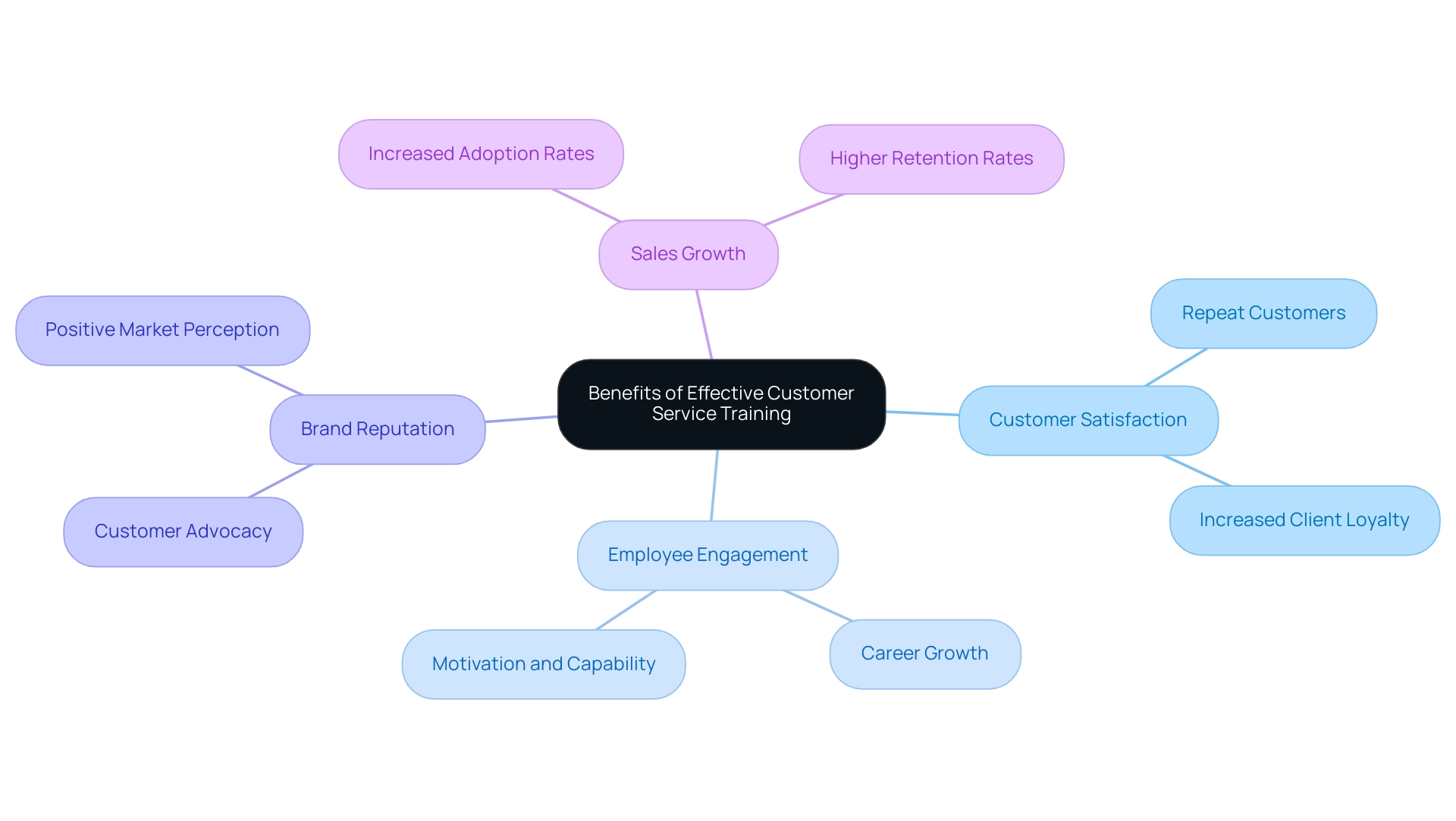
Types of customer service training programs
Customer service training isn’t one-size-fits-all. It comes in various forms, each tailored to meet specific organizational needs. Let’s break it down.
First, on-the-job training is gold. It puts employees face-to-face with clients, allowing them to learn in real-time. Immediate feedback? That’s the kind of learning that sticks. You can’t replicate that in a classroom.
Speaking of classrooms, structured lessons led by instructors are essential too. They cover both the theory and the practical skills needed for effective customer service. But we can’t ignore the power of e-learning. It’s flexible and lets employees learn at their own pace, which is crucial in today’s diverse workplace. Everyone learns differently, and e-learning caters to that.
Then there’s role-playing. This is where employees can practice client interactions in a safe space. It’s like a rehearsal for the real deal. But here’s the kicker: the blended approach — combining these different methods — is gaining traction. It’s a smart move that maximizes training effectiveness and meets the modern demand for personalized experiences.
Now, let’s talk about personalization. It’s not just a trend; it’s a necessity. The case study ‘Importance of Personalized Experiences‘ shows that customized interactions drive loyalty and satisfaction. In fact, 73% of customers stick with brands because of friendly support. And 31% believe that having an informed agent is crucial for a good experience. This underscores the need for solid training programs.
As Nelson Boswell wisely said, “Always give people more than what they expect to get.” That’s the mantra we need to instill in our support teams. In today’s competitive landscape, exceeding customer expectations isn’t just nice; it’s essential.
For those looking to enhance their customer support initiatives, subscribing to our updates can provide you with valuable insights and resources. And don’t worry; you can opt out whenever you want. Let’s make customer service a powerhouse for your business.
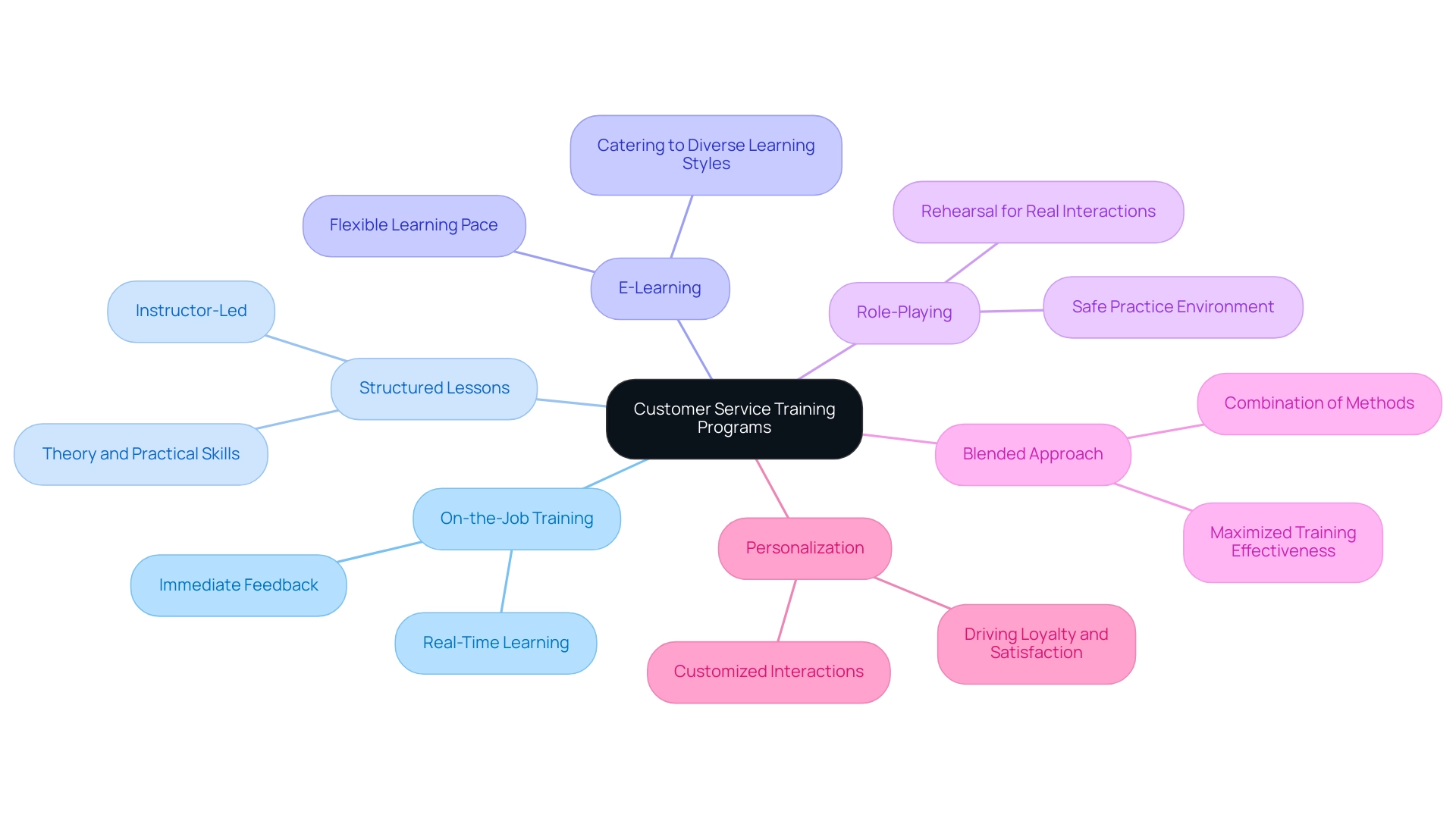
Measuring the effectiveness of customer service training
To truly assess the effectiveness of service support programs, you need to take a comprehensive approach. It’s not just about one metric; it’s about a whole toolkit of measurements that show how service delivery is improving. Client satisfaction surveys are key here. They let you gauge client perceptions before and after you roll out educational initiatives. Think of these surveys as your pulse check — they reveal how education impacts client experiences.
But don’t stop there. You also need to keep an eye on key performance indicators (KPIs) like:
- Response times
- Resolution rates
- Employee retention
These numbers quantify the impact of your development efforts. For example, if you want to know how well your team is resolving issues, calculate the average daily resolved tickets. Just take the total resolved tickets over the last 30 days, divide by about 18 working days in a month, and you’ve got a solid metric for operational efficiency.
Now, while numbers are important, you can’t ignore the qualitative side. Performance reviews and supervisor feedback are essential for understanding employee development and pinpointing areas that need work. Leslie Posey, a Customer Support Advocate, puts it well: “In my former position, call monitoring with feedback and coaching were tools used to assess satisfaction.” This kind of direct engagement with clients is vital. It deepens your understanding of what educational sessions are really accomplishing.
Also, let’s not forget the insights from the case study ‘The Role of Client Service Instruction.’ It shows that while education is a great starting point, real-world skills come from hands-on client interaction. Preparation alone won’t cut it when it comes to delivering effective service. In-app feedback mechanisms can also provide real-time insights, giving you a much better shot at gathering valuable data to improve user experience.
By systematically evaluating both quantitative and qualitative metrics, organizations can pinpoint their strengths and uncover growth opportunities. This ensures that your development initiatives are tailored to meet the ever-changing needs of your clients.
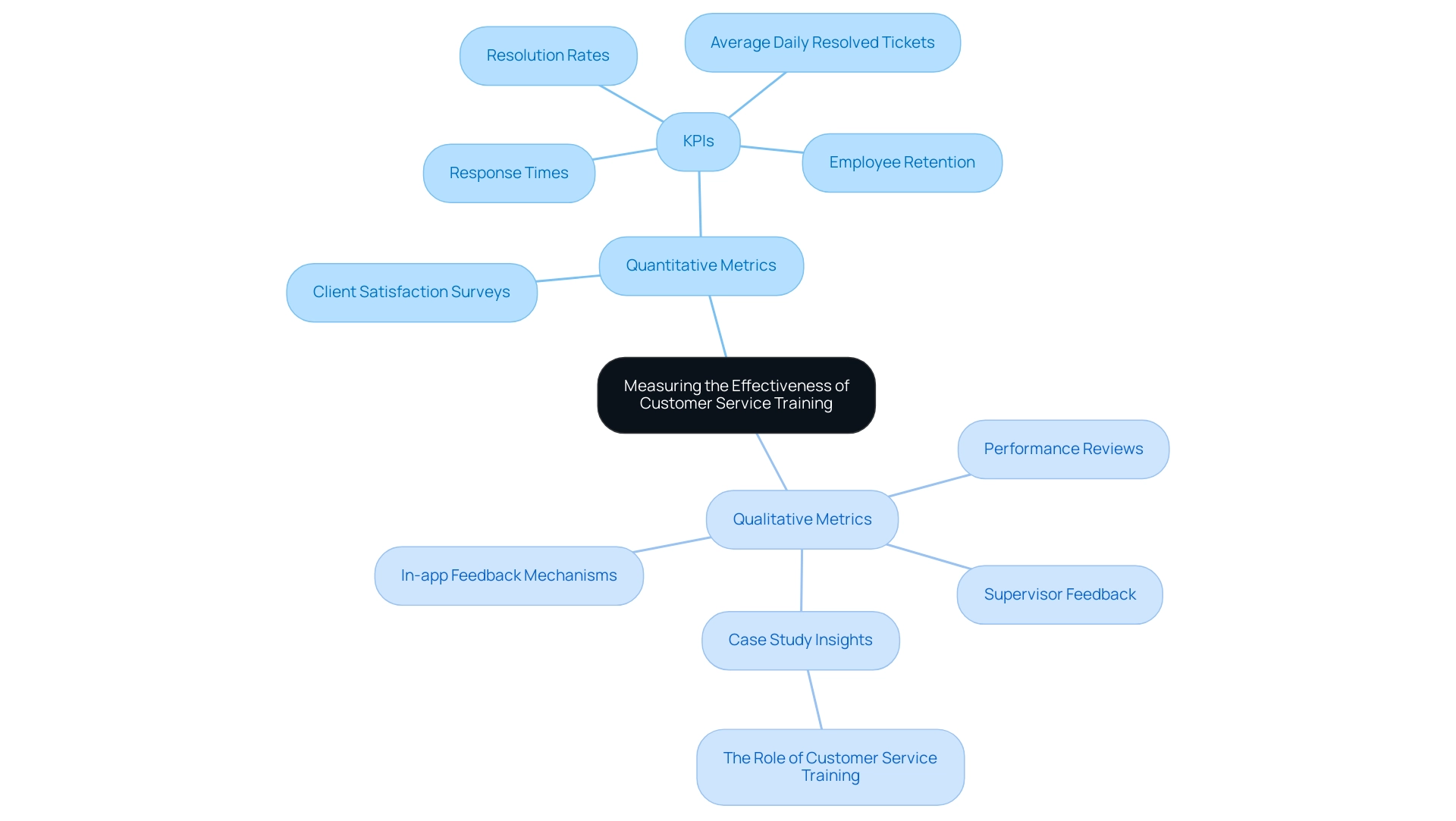
Challenges in implementing customer service training programs
Launching service support development initiatives isn’t a walk in the park. The biggest roadblock? Getting buy-in from both management and employees. Too often, people see learning as just another cost instead of a smart investment. Zendesk’s research backs this up — 66% of business leaders think that personalized education can actually lower customer acquisition costs.
Now, here’s something else to chew on: 57% of high-performing organizations recognize the value of personalized content and tailored learning paths. This isn’t just a nice-to-have; it’s essential. But it’s not just about the content. Logistical issues crop up too. Finding the right time to schedule training without throwing a wrench in daily operations is tricky. And let’s not forget about employee pushback. Many staff members are hesitant to embrace new methods, which can derail even the best-laid plans.
So, how do you tackle these challenges head-on?
- First, make sure to clearly communicate the benefits of development.
- Get employees involved in the planning process — they’ll be more likely to buy in if they feel part of the solution.
- Look into flexible learning options that won’t disrupt workflows.
Addressing these issues proactively can greatly improve your chances of success. Consider this: 60% of companies that commit to structured, curriculum-based education see a boost in revenue. That’s a compelling reason to break through the resistance to training initiatives.
This statistic underscores the need for formalized customer education programs. Right now, only a small fraction of companies are taking this structured approach. If you want to stay competitive, it’s time to step up your game.
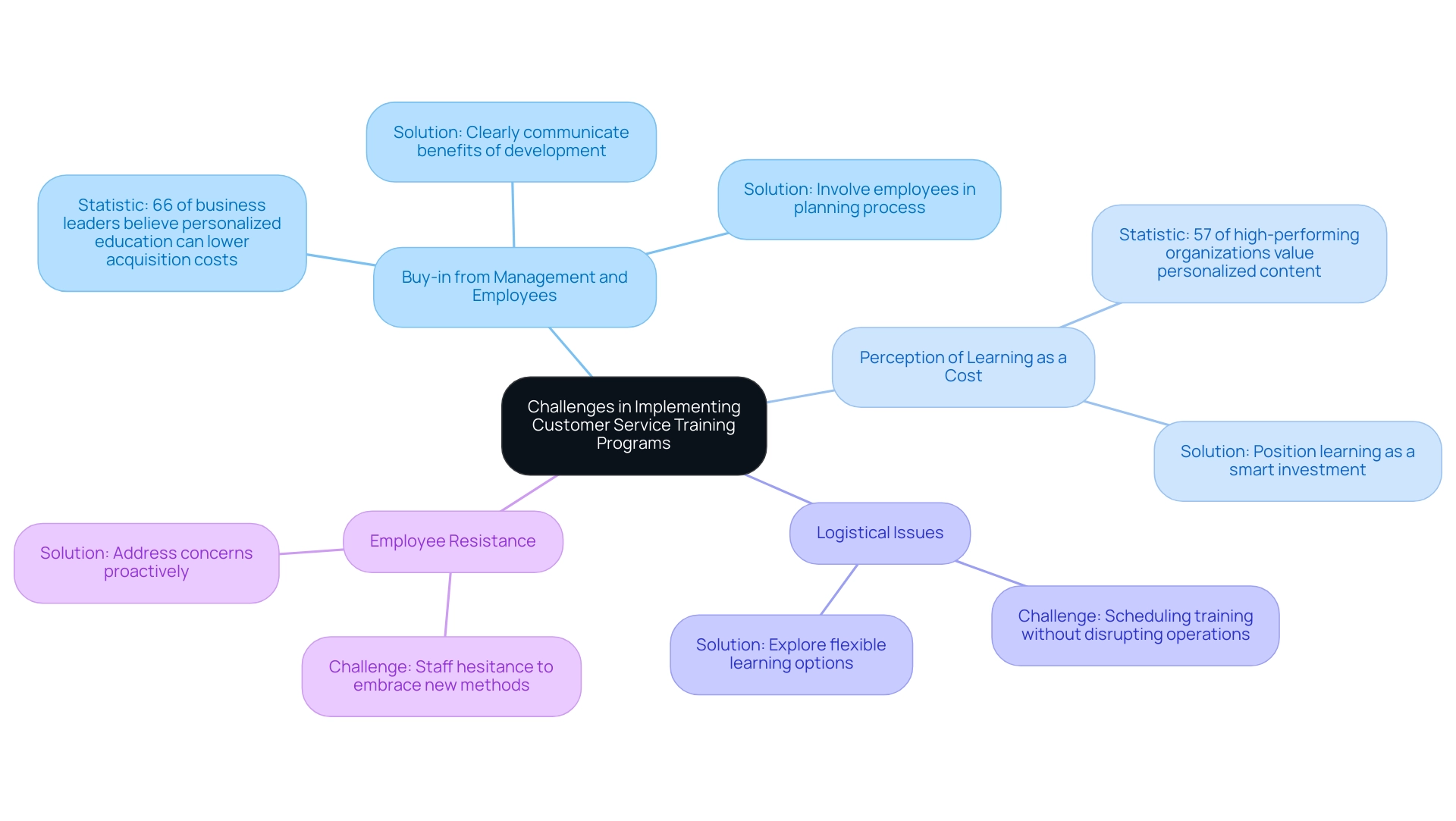
Conclusion
Customer service training programs are vital for fostering a customer-centric culture and enhancing employee capabilities. By focusing on essential skills such as communication, problem-solving, and product knowledge, organizations can significantly improve customer satisfaction and retention. The data underscores that effective training not only equips employees to handle inquiries and resolve complaints but also boosts their confidence and morale, leading to a more engaged workforce.
Various training methodologies, including:
- on-the-job training
- e-learning
- role-playing exercises
cater to diverse learning preferences and can be tailored to meet specific organizational needs. As the demand for personalized customer experiences grows, adopting a blended approach to training becomes increasingly important. This adaptability ensures that employees are well-prepared to exceed customer expectations, ultimately driving brand loyalty and enhancing reputation.
Measuring the effectiveness of these training initiatives is crucial, involving both quantitative metrics like customer satisfaction surveys and qualitative assessments through feedback. Addressing implementation challenges, such as securing buy-in from management and employees, is essential for the success of training programs. By clearly communicating the benefits and involving staff in the planning process, organizations can navigate these hurdles and realize the substantial return on investment that effective customer service training can deliver. As businesses continue to adapt to evolving consumer expectations, prioritizing customer service training will remain a key driver of success in the competitive marketplace.



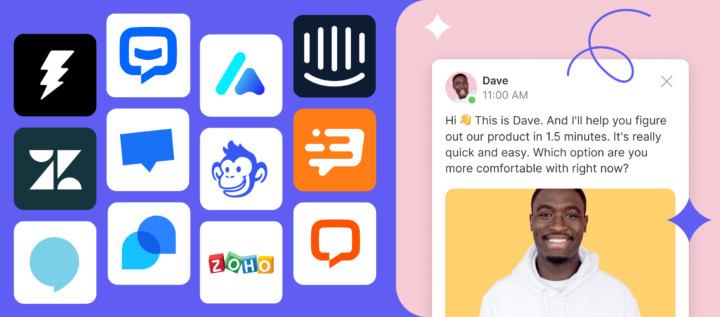


![Top 10 Best Custom Chatbot Platforms for your website [+AI]](https://www.dashly.io/blog/wp-content/uploads/2020/06/cover-1-720x308.jpg)
![21 proven tools for your 2025 marketing tech stack [Recommended by market experts]](https://www.dashly.io/blog/wp-content/uploads/2022/08/martech-stack-999-720x317.png)
